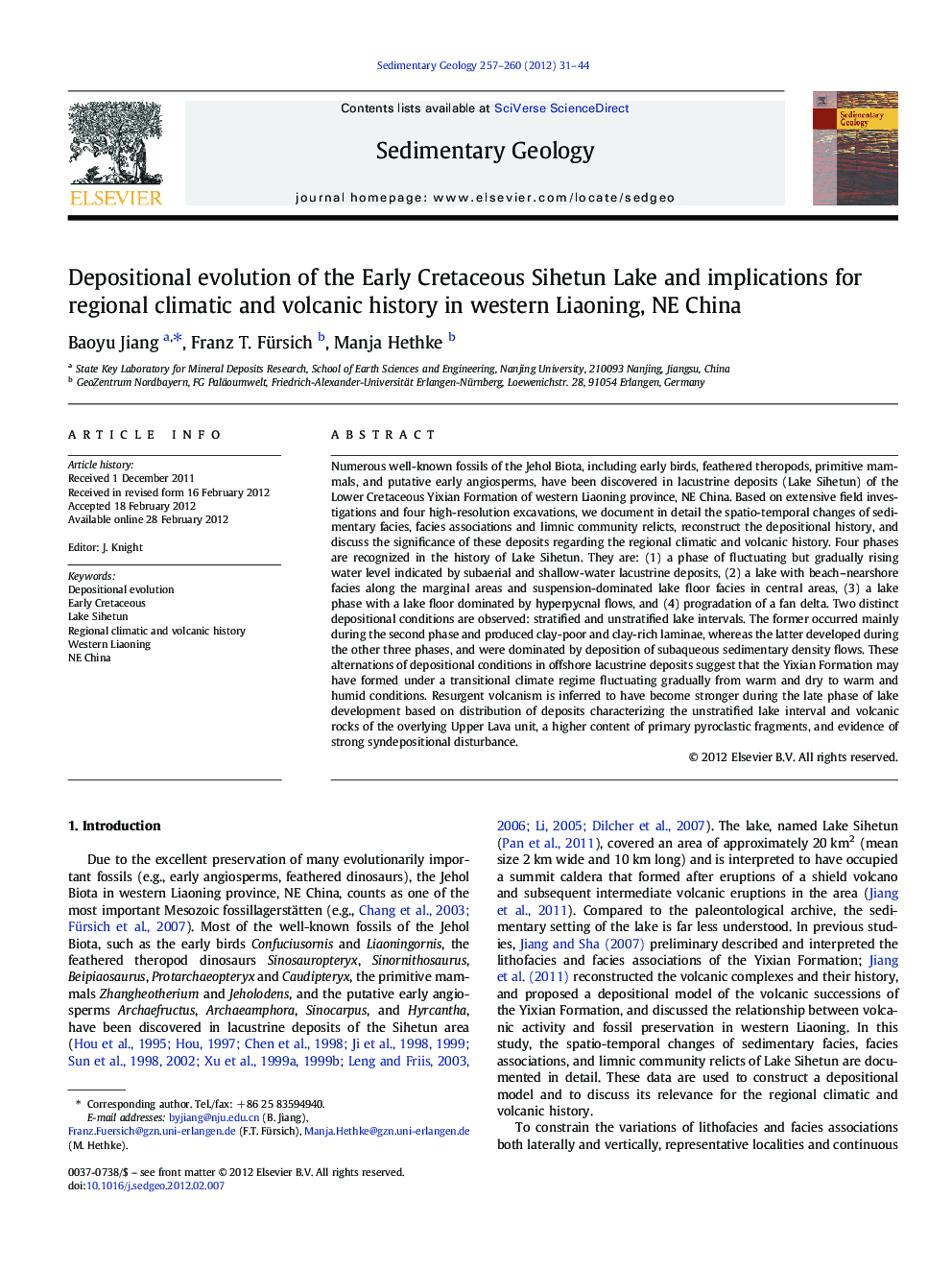| Article ID | Journal | Published Year | Pages | File Type |
|---|---|---|---|---|
| 4689811 | Sedimentary Geology | 2012 | 14 Pages |
Numerous well-known fossils of the Jehol Biota, including early birds, feathered theropods, primitive mammals, and putative early angiosperms, have been discovered in lacustrine deposits (Lake Sihetun) of the Lower Cretaceous Yixian Formation of western Liaoning province, NE China. Based on extensive field investigations and four high-resolution excavations, we document in detail the spatio-temporal changes of sedimentary facies, facies associations and limnic community relicts, reconstruct the depositional history, and discuss the significance of these deposits regarding the regional climatic and volcanic history. Four phases are recognized in the history of Lake Sihetun. They are: (1) a phase of fluctuating but gradually rising water level indicated by subaerial and shallow-water lacustrine deposits, (2) a lake with beach–nearshore facies along the marginal areas and suspension-dominated lake floor facies in central areas, (3) a lake phase with a lake floor dominated by hyperpycnal flows, and (4) progradation of a fan delta. Two distinct depositional conditions are observed: stratified and unstratified lake intervals. The former occurred mainly during the second phase and produced clay-poor and clay-rich laminae, whereas the latter developed during the other three phases, and were dominated by deposition of subaqueous sedimentary density flows. These alternations of depositional conditions in offshore lacustrine deposits suggest that the Yixian Formation may have formed under a transitional climate regime fluctuating gradually from warm and dry to warm and humid conditions. Resurgent volcanism is inferred to have become stronger during the late phase of lake development based on distribution of deposits characterizing the unstratified lake interval and volcanic rocks of the overlying Upper Lava unit, a higher content of primary pyroclastic fragments, and evidence of strong syndepositional disturbance.
► We document the temporal changes of sedimentation pattern of Lake Sihetun. ► We reconstruct regional depositional, climatic, and volcanic history. ► Two depositional conditions are observed: stratified and unstratified. ► Four phases are recognized in the history of Lake Sihetun.
